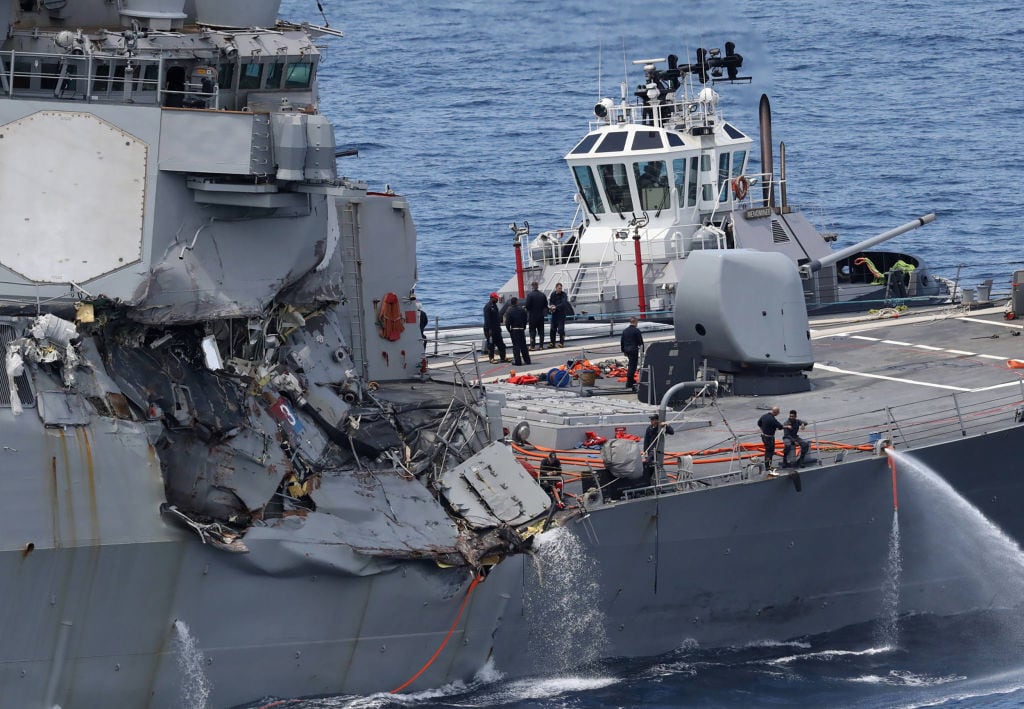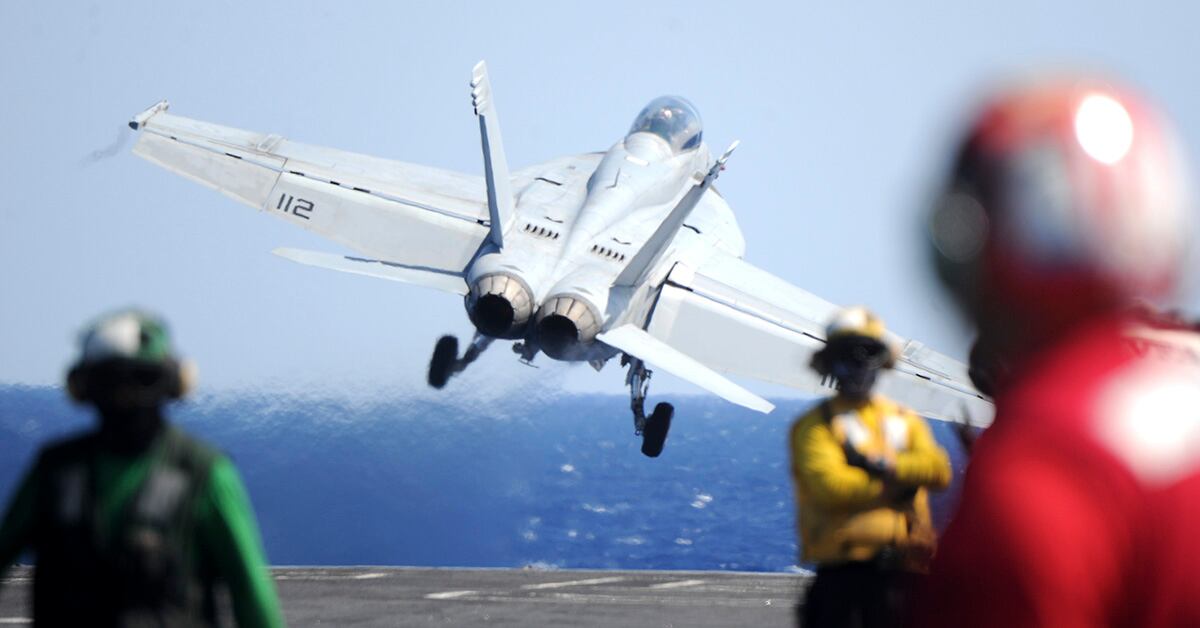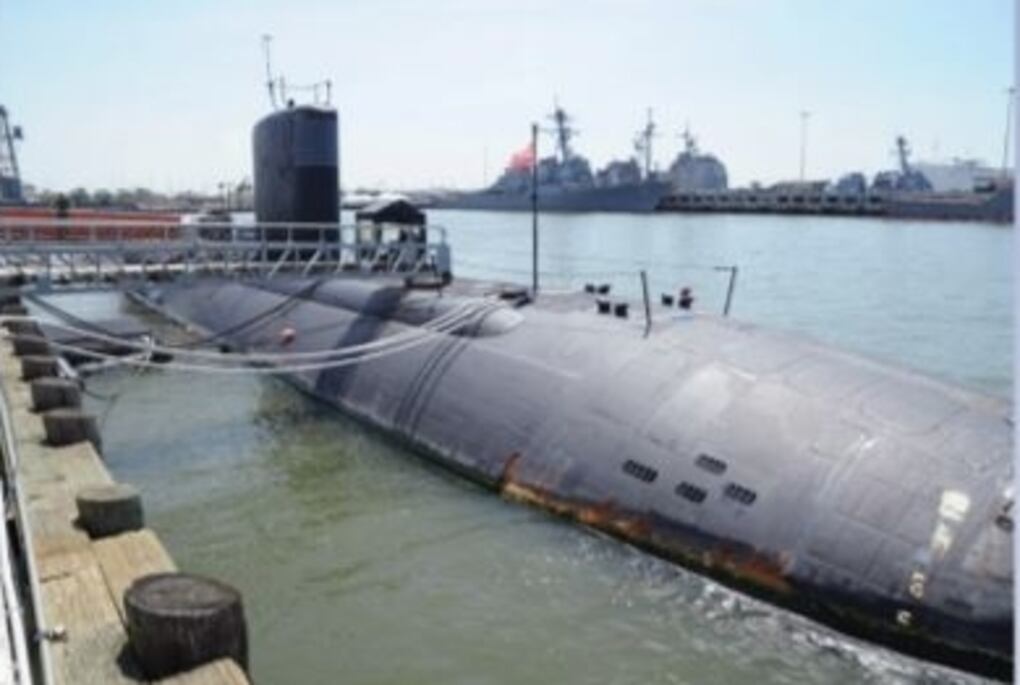While the Navy has made progress revamping its surface fleet in the aftermath of two fatal warship collisions last year, some sailors based in Japan continue to log 100-hour weeks, often going without much sleep, a government watchdog reported Wednesday.
Manning shortages, maintenance and training neglect — plus a bruising operational tempo — all came under public scrutiny last summer after two destroyer collisions in the western Pacific killed 17 sailors assigned to 7th Fleet.
Navy reports also cited fatigue and crew shortages as factors in the twin tragedies involving the destroyers Fitzgerald and John S. McCain and a pair of commercial vessels.
Testifying on Capitol Hill, Government Accountability Office analyst John Pendleton said a team of investigators he led in November to interview 7th Fleet personnel saw improvements to the forward-deployed Navy’s systemic problems.
But the ongoing reforms are overworking sailors, too.
“Sailors consistently told us that ship workload has not decreased, and it is still extremely challenging to complete all required workload while getting enough sleep,” Pendleton said in a statement delivered to lawmakers at a hearing before the Senate Armed Services Committee’s seapower and readiness and management subcommittees.
“It’s simply not putting enough sailors on the ships to cover the new workload,” Pendleton said. “They told us they’re still working very hard, sometimes a 100-hour week or more.”
RELATED

Manning remains problem when it comes to placing the right number of sailors on a ship and ensuring those sailors are qualified for a given job, known in the sea service as “fit and fill.”
“The Navy’s methods for tracking fit and fill do not account for sailor experience and may be inaccurately capturing the actual presence of sailors onboard and available for duty on its ship,” Pendleton wrote in an updated GAO report on Navy readiness released Wednesday.
The GAO warned in a May 2017 report that the Navy’s process for determining manpower requirements failed to fully account for a ship’s workload: “The Navy was using outdated standards to calculate the size of ship crews that may have been leading to overburdened crews working long hours."
GAO’s updated report cautioned that until manpower requirements are reassessed across the fleet, the Navy risks undersized crews filled with overworked sailors, a mix that could produce "potential negative effects on readiness and safety.”
“Navy officials told us that manning challenges will continue through at least fiscal year 2021 as the Navy increases its end strength and trains its new sailors to gain the proper mix of skills to operate and maintain the fleet," the report states.
Pendleton also reported areas of improvement for the surface fleet.
Roughly 41 percent of Japan-based cruiser and destroyer training certifications were expired as of September 2017.
That plummeted to 9 percent in November, with less than 3 percent of expired certifications dogging ships in operational status, Pendleton told senators.
“What I found was encouraging,” he said. “Things have improved markedly. However, this is keeping the sailors very busy.”
The 7th Fleet also is doing a better job at ensuring vessels have updated certifications before heading to sea. Navy leaders instituted controls that limit the number of training waivers issued to let crews leave port, he said.
A year ago, officials were providing waivers for those training requirements “at an alarming rate,” Pendleton said, and that “lack of training had contributed to these deadly collisions.”
RELATED

Navy Secretary Richard Spencer, Vice Chief of Naval Operations Bill Moran and Marine Corps Commandant Gen. Robert Neller joined Pendleton at the hearing.
Wednesday’s hearing again laid bare the multiple challenges facing today’s Navy and Marine Corps.
They must rebuild readiness after nearly 20 years of relentless post-9/11 operational tempo, while also preparing for conventional war, maintaining the current global order and developing weapons systems of the future.
Rising rivals like China and Russia “have had to do nothing other than recapitalize their forces,” Neller said.
Several senators expressed skepticism regarding a directive by Defense Secretary James Mattis this fall that fighter jets reach 80 percent readiness in the next year.
Spencer called it “a stretch goal,” but “it’s a stretch goal we will take.”
When Sen. Mazie Hirono, a Democrat from Hawaii, expressed concern about “innovative accounting techniques” getting the services to that 80 percent goal, Spencer reassured her that “it’s not going to be done by pencil-whipping.”
RELATED

During the hearing, both military leaders and lawmakers warned of dire consequences should Congress and the White House relaunch the so-called “sequestration” cuts to defense funding.
If a spending deal isn’t hammered out by the fall, automatic funding caps put in place in 2011 would return, a development Spencer said would be “devastating, in many ways,” crippling the readiness recovery efforts underway.
“It would be more than just Blue Angels not doing air shows,” Neller warned.
While sequestration didn’t help, the GAO’s Pendleton said the Navy also suffered “a demand and supply problem.”
“The Army…they were able to bring more folks home, and retrain,” he said. “For the Navy and Air Force…demand didn’t really slow down. They had to continue to find ways to meet the demand with a shrinking fleet.”
RELATED

The long wait for maintenance among the Navy’s submarines was also discussed at the hearing.
To the chagrin of South Dakota Republican Sen. Mike Rounds, VCNO Moran reported three fast-attack submarines couldn’t dive today because they’re still awaiting maintenance.
One of them, the Boise, has been out of commission for four years waiting for repairs, GAO recently reported.
Moran bemoaned the maintenance backlog as “the age-old problem of what we talked about in the last two years of this hearing.”
He pointed to aging ballistic missile subs taking priority in the public shipyards, followed by aircraft carriers “which had been ridden very hard."
Moran said the Navy is enlisting the private sector to mend boats faster.
“We want no more Boises,” Moran said. “The numbers are coming down significantly. The standing in line is coming down significantly.”
Geoff is the managing editor of Military Times, but he still loves writing stories. He covered Iraq and Afghanistan extensively and was a reporter at the Chicago Tribune. He welcomes any and all kinds of tips at geoffz@militarytimes.com.





